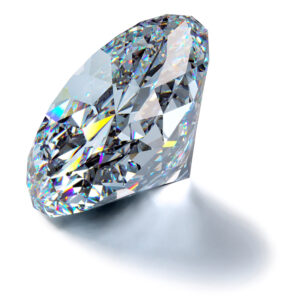The natural diamond industry is being challenged by emerging competition from synthetic diamonds. The natural diamond industry — a cartel led by Alrosa from Russia, De Beers from Luxembourg and British-Australian Rio Tinto — accounts for more than 60 percent of global diamond mine production (116 million carats mined worldwide in 2021.)
According to lab-grown diamond brand Brilliant Earth, lab-grown diamonds — or synthetic diamonds — “are created from tiny carbon seeds of pre-existing diamonds. Scientists use advanced technology — either extreme pressure and heat or a special deposition process known as chemical vapor deposition — to mimic the method of natural diamond formation. Over the course of six to 10 weeks, a rough diamond is formed … and only scientists can distinguish the differences by analyzing identifying markers caused by the growth conditions.”
The Federal Trade Commission in 2018 revised its “Jewelry Guides” (to better align with Section 5 of the FTC Act) to eliminate the term “natural” from its definition of “diamonds,” since it found no difference between “natural” and “synthetic” diamonds.
The synthetic diamond market was estimated by Transparency Market Research to have generated revenue of $21.4 billion in 2021; is projected to register a 6.9 percent compound annual growth rate from 2022 to 2031; and by 2031, this market is likely to reach $43.7 billion annually.
In the jewelry industry, retail sales of synthetic diamonds have increased from less than $1 billion in 2016 to nearly $12 billion in 2022, with sales rising by 38 percent from 2021 to 2022. Impressively, synthetic diamonds by value represent a 17.3 percent share of the loose jewelry diamond market in 2022 — up from 8.3 percent in 2020. Also, by 2030, the global market volume of synthetic diamonds is projected to be 19.15 million carats.
Although high-end electronics dominate in industrial usage due to their extreme hardness and their unique biocompatibility, synthetic diamonds are ideal for use in the manufacture of medical and scientific instruments. They are being explored for applications in surgical tools, high-precision imaging equipment and drug-delivery systems. Industrial demand is primarily satisfied by synthetic diamonds.
However, the primary market for diamonds remains jewelry and, most popularly, engagement rings. As Mark Perry, an economist affiliated with the American Enterprise Institute, wrote nearly a decade ago: “Americans exchange diamond rings as part of the engagement process because in 1938 De Beers decided that they would like us to. Prior to a stunningly successful marketing campaign 1938, Americans occasionally exchanged engagement rings, but it wasn’t a pervasive occurrence. Not only is the demand for diamonds a marketing invention, but diamonds aren’t actually that rare. Only by carefully restricting the supply has De Beers kept the price of a diamond high.”
Perry points out that the diamond the consumer purchases “is a depreciating asset masquerading as an investment.” A growing consensus — an “open secret” — in the diamond industry is that diamonds are worthless.
Wider knowledge of social and environmental aspects of the exploitive trade in “blood diamonds” has altered the perspective of many consumers toward purchasing synthetic diamonds. For example, natural diamond mining company De Beers created a new synthetic diamond brand called Lightbox. De Beers, however, “expects lab-grown prices to decline as more supply comes into the market.”
Unsurprisingly, Bloomberg describes the rise of synthetic diamonds as “an existential threat to the natural mining industry.” That threat is metastasizing at the retail level, as a recent 2023 survey by InStore found 63 percent of American jewelers regularly stocking synthetic diamonds, up from 58 percent in 2022.
Synthetic diamonds represent a “technological discontinuity,” whereby synthetic diamonds — a new technology — are gradually replacing natural (“polished”) diamonds in the jewelry market, and now supply the majority of industrial demand.
Technological developments in improved quality of synthetic diamonds — coupled with increasing consumer product knowledge and acceptability — result in competition in an industry that artificially restricts the availability of a commodity, in this case, natural diamonds.
De Beers is reportedly reducing the prices of natural diamonds by as much as 40 percent as demand decreases. The jewelry industry is changing through competition, as diamond jewelry consumers are gaining similar synthetic — versus natural — diamond jewelry choices annually and at a significantly lower cost than a natural diamond counterpart item. For example, a Tiffany natural diamond tennis bracelet costs more than $20,000, while a bracelet containing similar, lab-grown diamonds from Brilliant Earth costs $3,450.

